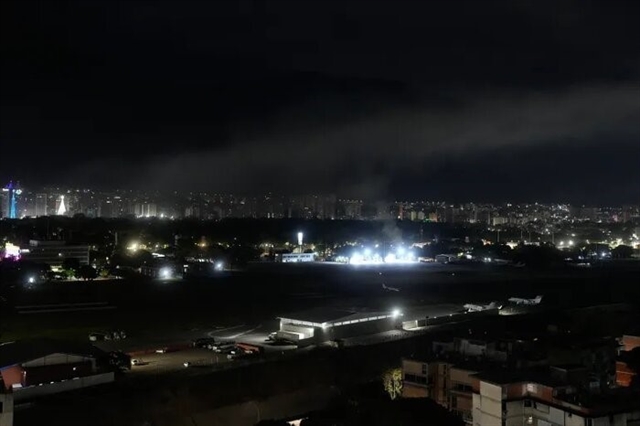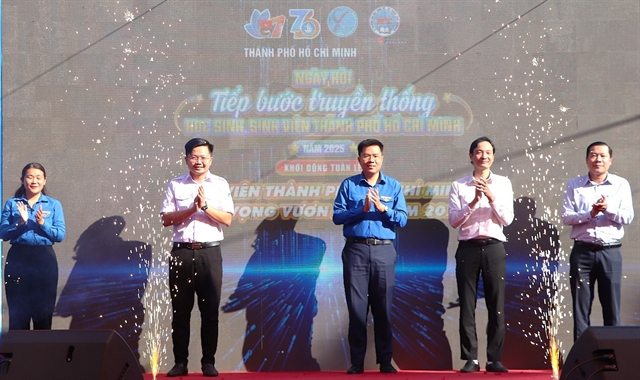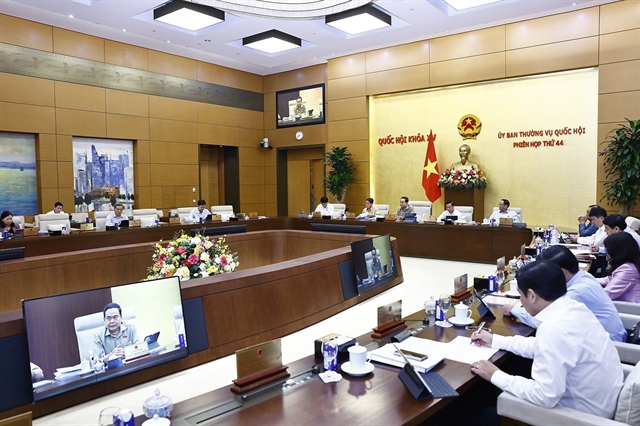 Politics & Law
Politics & Law


|
| The National Assembly Standing Committee continues its 44th session on Thursday. — VNA/VNS Photo Doãn Tấn |
HÀ NỘI — The Government’s efforts to reduce wastefulness in 2024 have seen significant progress, according to official reports presented to the National Assembly (NA) Standing Committee on Thursday.
Speaking at the meeting, Minister of Finance Nguyễn Văn Thắng noted that the focus was put on boosting efficiency in managing the State budget and public assets, public investment, resource management and utilisation, public sector's labour and time management and inspection activities.
The Prime Minister has issued a comprehensive programme for 2025 to prevent wastefulness, aiming to implement practical measures and drive breakthroughs to meet the targets of the 2021-25 socio-economic development plan.
The Deputy Chairman of the NA’s Committee on Economic and Financial Affairs, Lê Quang Mạnh, agreed with the tasks outlined by the Government and urged more efforts to implement the Party’s directives on wastefulness prevention.
He also called for swift policy reviews across social and economic management to identify bottlenecks and propose effective solutions, including a review and amendment of the Law on Thrift Practice and Wastefulness Prevention.
Efforts should also focus on strict financial regulations, effective fiscal policies, budget deficit control and solutions to address shortcomings in the implementation of national target programmes and public investment, he added while calling for better implementation of key projects in line with NA resolutions.
The Government should continue reorganising public land and property, transferring underused or ineffective central-level assets to local authorities for socio-economic development, especially in terms of public facilities after administrative restructuring and unused land in delayed projects.
Wastefulness prevention has long been identified as a top priority, with the Government issuing various directives and focusing on policy reform to address inefficiencies in national resource allocation.
During the meeting, NA Deputy Chairman Trần Quang Phương and head of the NA’s Deputies Affairs Committee Nguyễn Thanh Hải requested a detailed review of the report to identify the root causes of current issues and propose improvements for future implementation. They also called for better evaluation of thrift practices across public agencies and localities.
Citing the second facilities of Bạch Mai Hospital and Việt Đức (Việt Nam-Germany Friendship Hospital), NA Deputy Chairman Nguyễn Khắc Định said that a comprehensive review of incomplete or delayed projects is necessary to prevent wastefulness.
“There are places where land has been left unused for years after registering for projects. Inventory should be conducted to revoke those to prevent waste,” he said.
Định also called for tighter financial and asset management to prevent losses and misconduct, while also stressing the need for clear responsibility for thrift practices and wastefulness prevention across all ministries, sectors and local authorities.
In 2024, the State budget revenue reached VNĐ2.043 quadrillion (US$78.5 billion), about 20.1 per cent higher than the estimates. Expenditures were estimated at VNĐ1.83 quadrillion ($70.3 billion), accounting for 86.4 per cent of the plan.
Budget execution was tightly controlled to reduce recurrent expenditures and eliminate unnecessary or delayed spending. Ministries, sectors and local areas reported a total of VNĐ64.014 trillion ($2.46 billion) in saved funds and capital.
The national multidimensional poverty rate dropped to 1.93 per cent in 2024, down by one percentage point from 2023. By the end of 2024, 78 per cent of communes nationwide had met the new-style rural standards, and five provinces were recognised for completing the national rural development programme.
As of December 31, 2024, the total disbursed capital for nine national key transport projects was VNĐ70.74 trillion ($2.72 billion), or 72.9 per cent of the year’s plan (VNĐ96.99 trillion).
Accelerated public investment disbursement contributed to the launch and rapid progress of many strategic infrastructure projects. However, 30 out of 46 central ministries and agencies, along with 26 out of 63 localities, recorded disbursement rates below the national average.— VNS